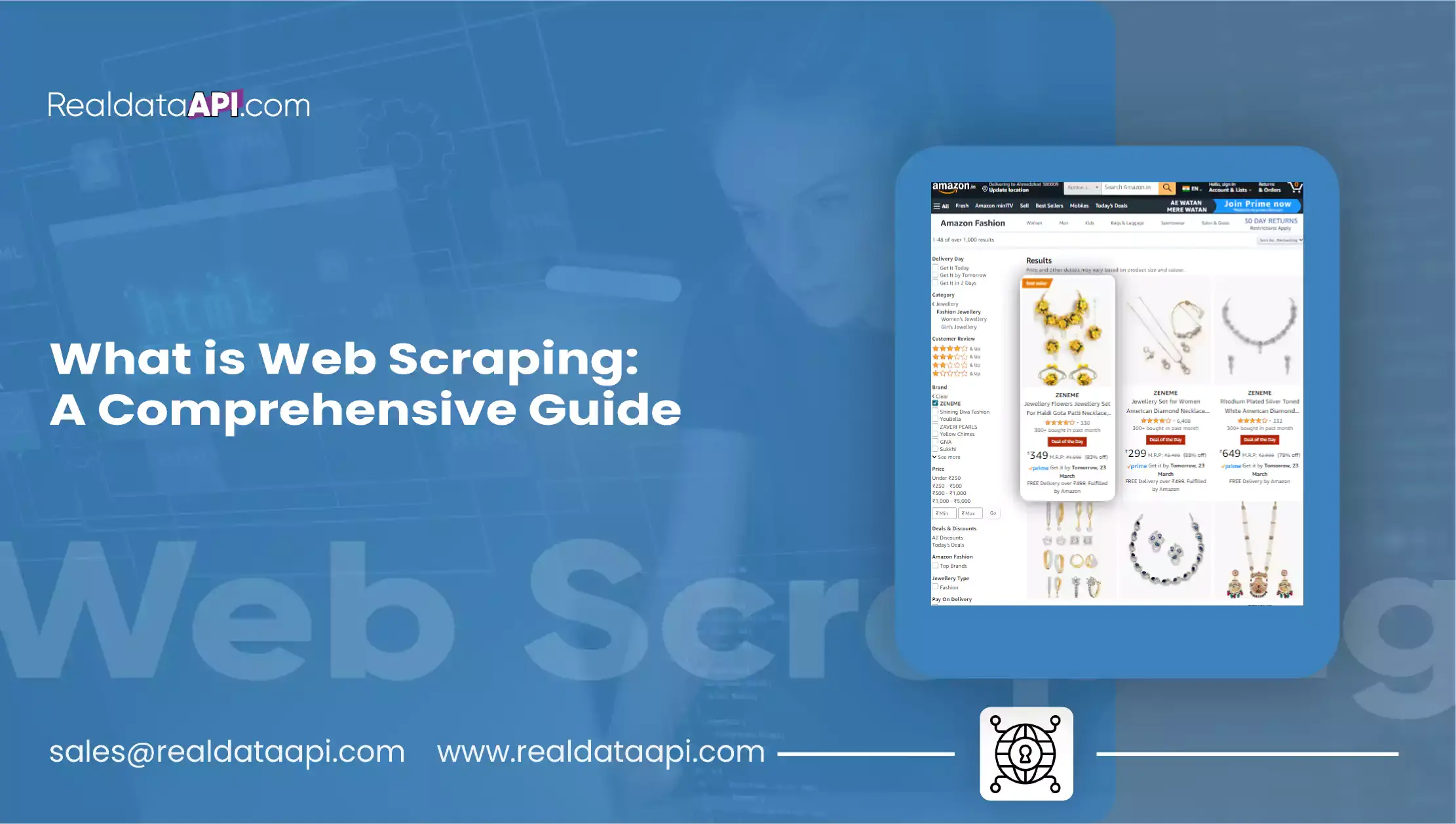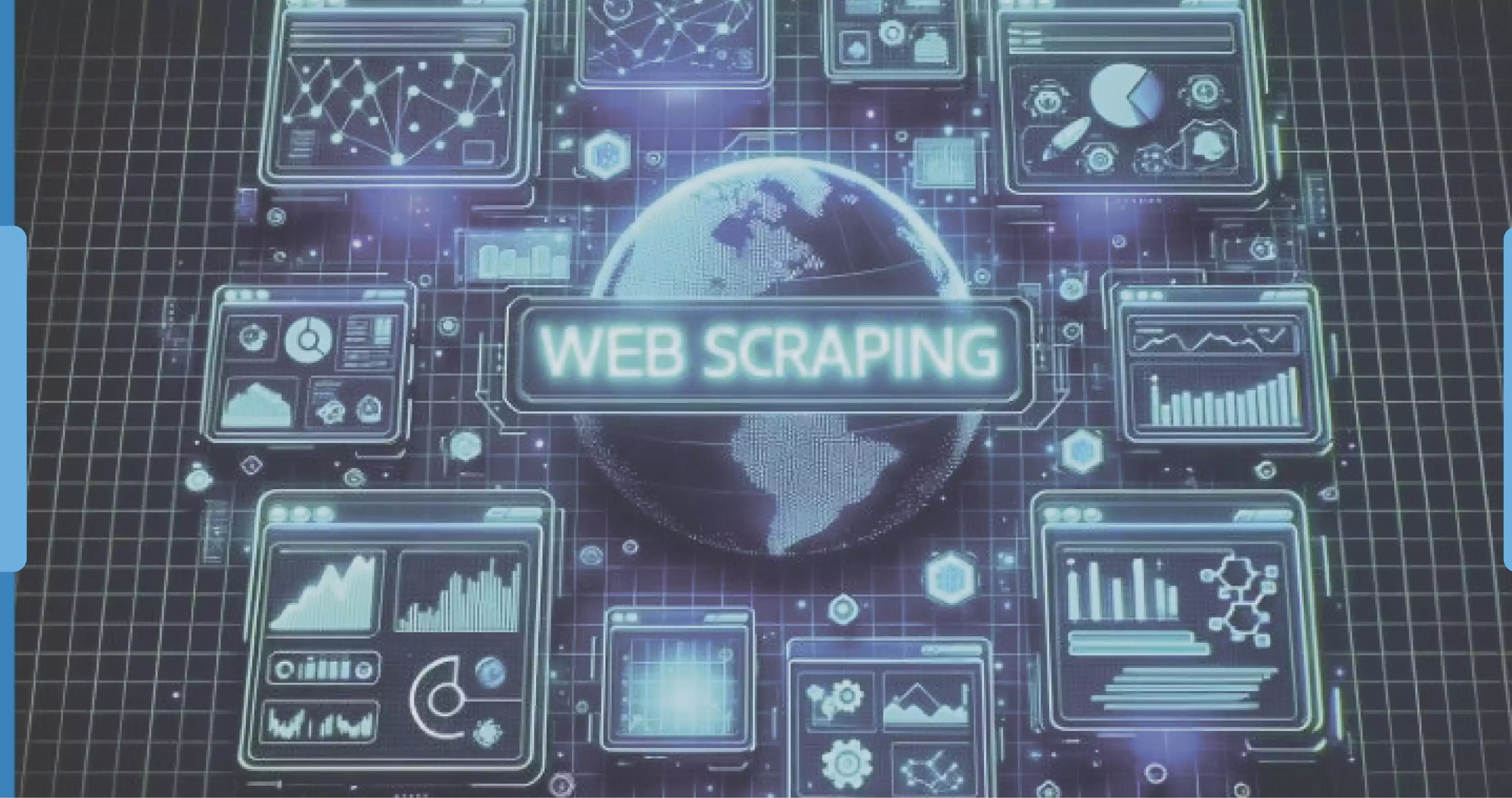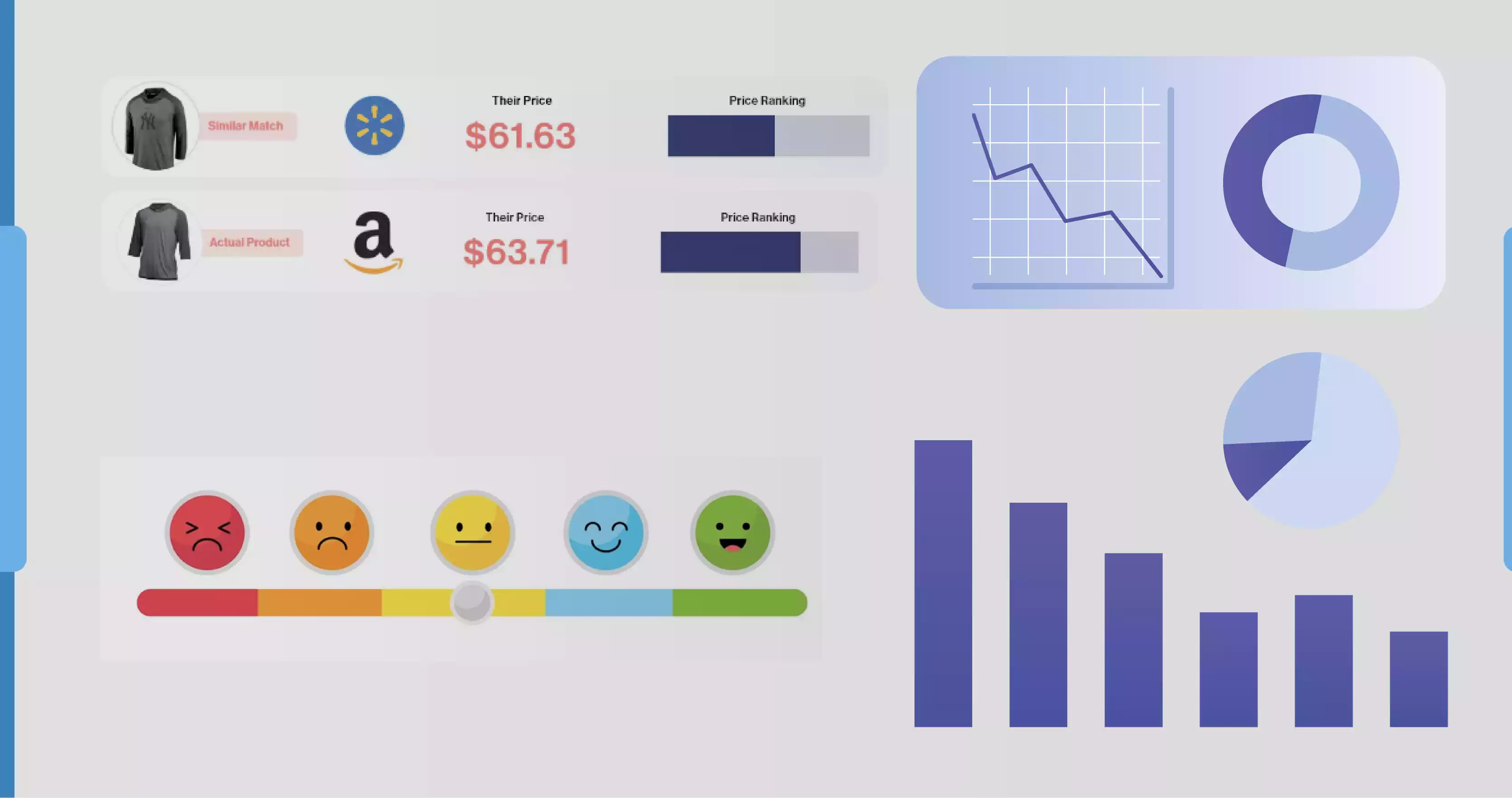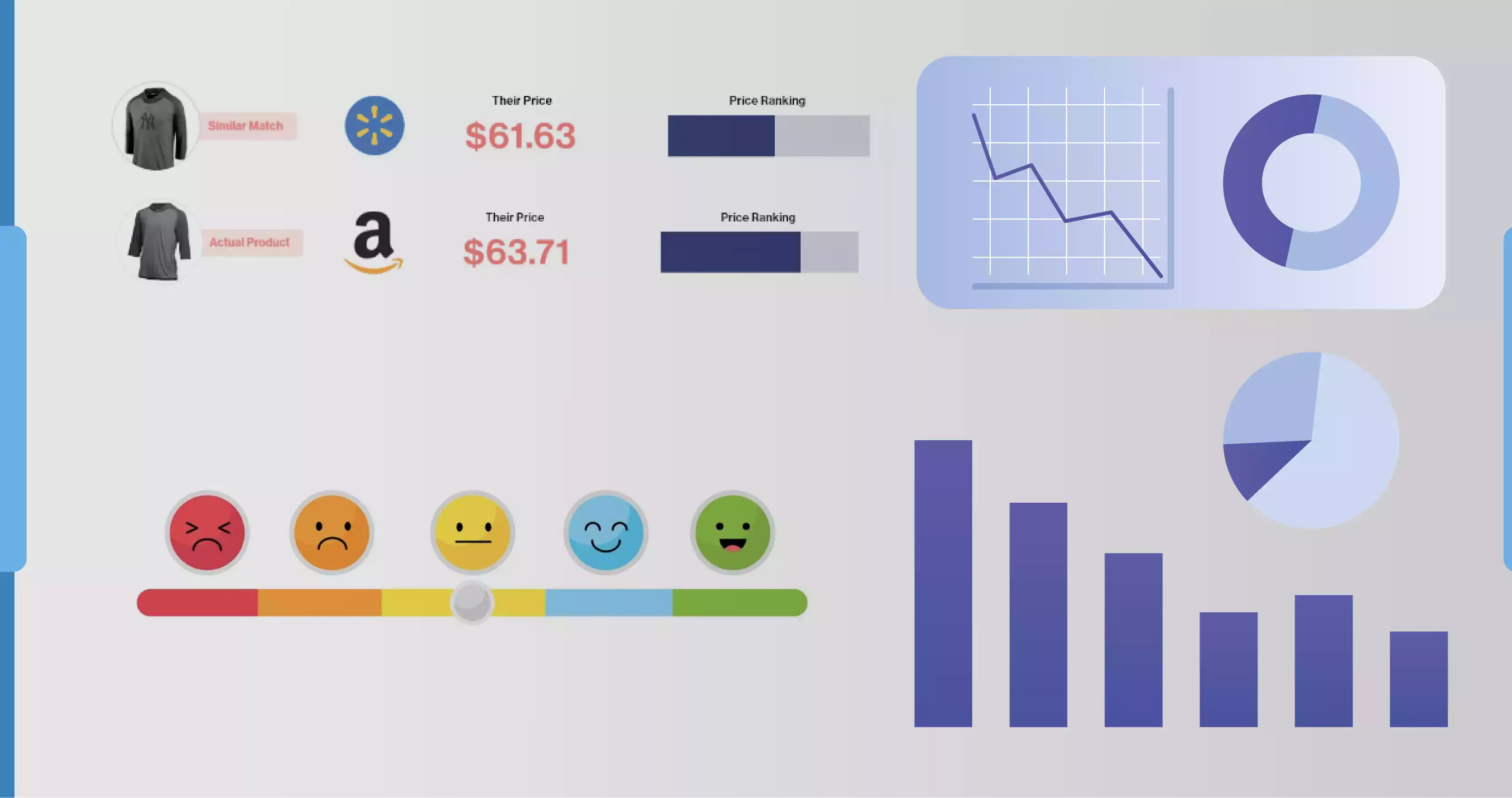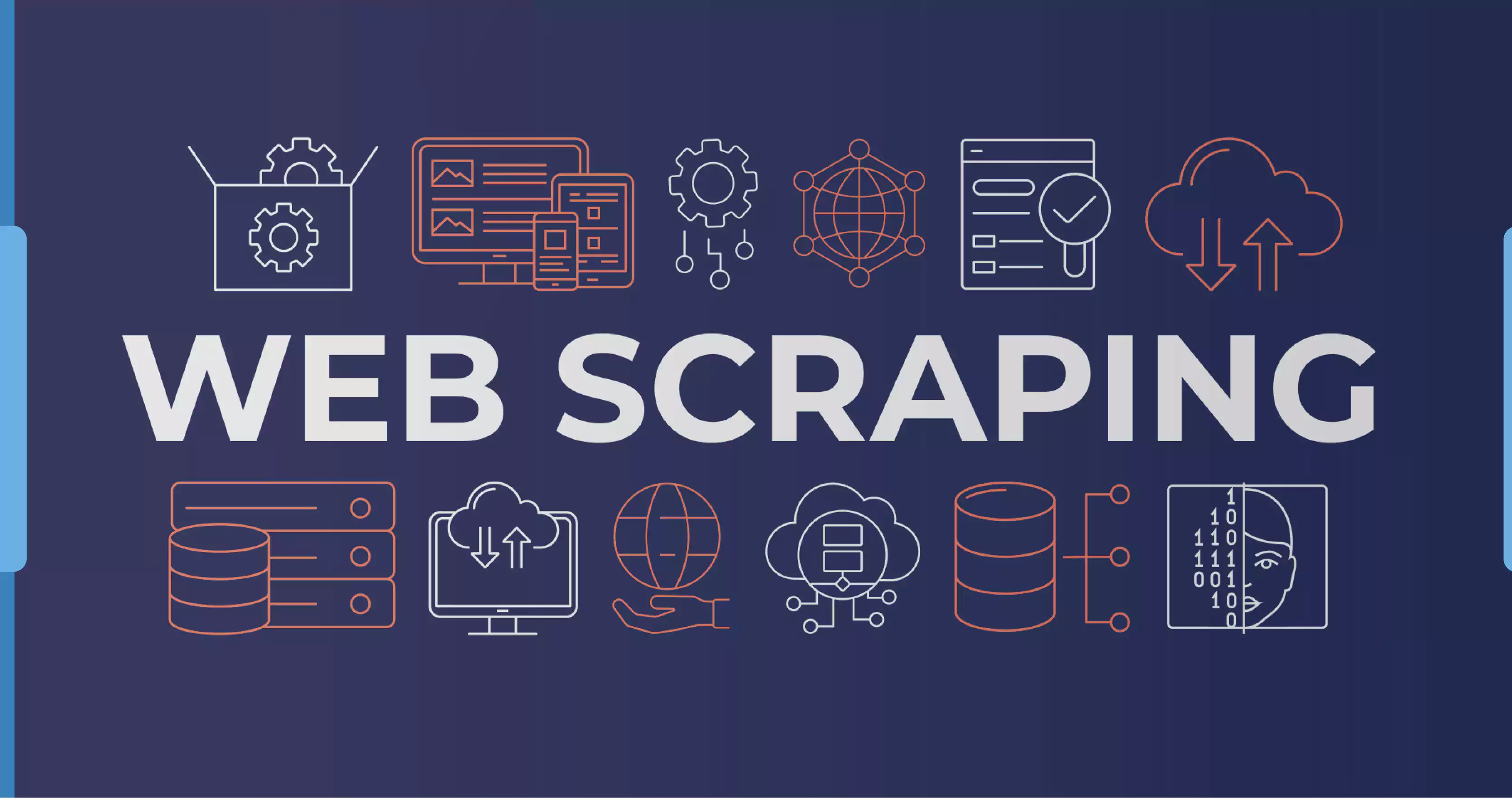https://www.realdataapi.com/web-scraping-a-comprehensive-guide.php
Introduction
In today's digital era, the internet is a treasure trove of valuable data ripe for the taking. Web scraping is an indispensable technique for extracting this data from websites automatically
Whether seeking insights on prices, customer reviews, or market trends, web scraping is the essential tool for informed decision-making and competitive advantage across industries.
According to a report by Grand View Research, Inc., the global web scraping market size is expected to reach $7.3 billion by 2028, showcasing the widespread adoption of this technology across various sectors.
Businesses efficiently leverage web scraping services and tools to streamline processes such as price comparison, brand monitoring, sentiment analysis, and market research.
For instance, price comparison engines rely on web scraping to gather data from multiple sources and provide consumers with the best deals. Similarly, brand monitoring platforms scrape online mentions and reviews to track brand sentiment and reputation.
Furthermore, market research firms employ web scrapers to collect data on consumer behavior, competitor activities, and industry trends, facilitating informed decision-making.
Integrating web scraping with machine learning techniques enhances its capabilities further. Machine learning algorithms can be trained to analyze scraped data, identify patterns, and make predictions, empowering businesses with actionable insights for strategic planning.
Web scraping has emerged as a fundamental tool in the digital landscape, empowering businesses to harness the wealth of data available on the internet and gain a competitive edge in their respective industries.
What is Web Scraping – The Basic Understanding
Web scraping is the process of extracting data from websites using specialized software tools known as web scrapers.
These web scrapers navigate through web pages, identifying and retrieving specific data elements and storing them in a structured format for further analysis.
While web scraping can be performed manually, automation through web scraping services or tools is typically more efficient and scalable.
For example:
- In price comparison, web scrapers can gather product prices from multiple e-commerce websites, allowing consumers to compare prices and find the best deals.
- In brand monitoring, web scrapers collect online mentions and reviews of a brand, providing insights into brand sentiment and reputation.
- Similarly, in sentiment analysis, web scrapers extract social media posts or customer reviews to analyze public opinion about a product or service.
- In market research, web scrapers gather data on market trends, competitor activities, and consumer behavior from various sources, facilitating informed decision-making.
Overall, web scraping is crucial in various industries because it provides valuable data for analysis and decision-making processes.
Whether comparing prices, monitoring brand reputation, analyzing sentiment, or conducting market research, web scrapers offer a powerful solution for extracting and analyzing data from the web.
How Does Web Scraping Work?
Web scraping is a process that involves several steps to extract data from websites effectively.
Sending Requests: Web scrapers initiate the process by sending HTTP requests to the targeted website's server, specifying the desired webpage or pages.
Retrieving HTML Content: Upon receiving the request, the server responds by returning the requested webpage's HTML code containing the content to be scraped.
Parsing HTML: The web scraper parses the HTML content to identify relevant data elements by analyzing the structure, tags, classes, or IDs.
Extracting Data: Using the parsed HTML, the web scraper extracts the desired data elements such as text, links, images, or other content based on predefined criteria.
Handling Dynamic Content: Advanced web scrapers can handle dynamic websites by simulating user interactions to trigger additional content loading, ensuring comprehensive data extraction.
Cleaning and Preprocessing: After data extraction, the web scraper may clean and preprocess the extracted data to remove irrelevant information and ensure structured formatting for further analysis.
Storage or Analysis: The extracted and processed data can then be stored in a structured format, such as a database or CSV file, or subjected to analysis for insights and decision-making purposes.
In summary, web scraping involves sending requests, retrieving HTML content, parsing, extracting, handling dynamic elements, and preprocessing data to obtain valuable information from websites.
Diving into Diverse Uses of Web Scraping
Web scraping serves as a versatile tool across diverse industries and sectors, empowering organizations to extract valuable data from the internet to fulfill a multitude of purposes:
Price Comparison: Retailers utilize web scraping to collect pricing data from competitor websites, enabling them to adjust their prices strategically and remain competitive.
Market Research: Companies conduct market research by scraping data on consumer trends, preferences, and behaviors from social media platforms and forums, as well as reviewing websites to inform product development and marketing strategies.
Brand Monitoring: Brands monitor online mentions and customer feedback using web scraping to gauge brand sentiment, identify emerging issues, and manage their online reputation effectively.
Competitor Analysis: Businesses leverage web scraping to gather data on competitors' product offerings, pricing strategies, and promotional activities to inform their decision-making and gain a competitive edge.
Lead Generation: Web scraping enables organizations to extract contact information from websites, directories, and social media platforms to generate leads and expand their customer base.
Sentiment Analysis: Companies analyze customer reviews and feedback from various sources to gauge public sentiment toward their products or services and identify areas for improvement.
Financial Data Analysis: Financial institutions use web scraping to collect and analyze data from financial news websites, stock exchanges, and economic indicators to make investment decisions and assess market trends.
Web scraping is a versatile tool for extracting and analyzing data from the web, providing valuable insights for decision-making in industries such as e-commerce, marketing, finance, and more.
Integrating Web Scraping with Machine Learning
Integrating web scraping with machine learning (ML) techniques offers a powerful solution for automating data extraction and analysis, providing enhanced capabilities for deriving insights from web data.
By leveraging machine learning algorithms, web scraping processes can be streamlined and optimized. ML models can be trained to recognize patterns and structures within the scraped data, allowing more efficient extraction of relevant information from web pages. This automation reduces the manual effort required for data extraction, making the process faster and more scalable.
Furthermore, machine learning algorithms can analyze the scraped data to uncover hidden patterns, trends, and insights. For example, ML models can identify correlations between different data points, predict future trends based on historical data, and classify data into different categories or groups. This analysis can provide valuable insights for decision-making and strategic planning.
One common application of integrating web scraping with machine learning is sentiment analysis. By scraping customer reviews and feedback from websites and social media platforms, ML models can analyze the sentiment expressed in the text (positive, negative, or neutral) to gauge public opinion about a product or service.
Overall, integrating web scraping with machine learning techniques enhances the capabilities of both processes, enabling organizations to extract valuable insights from web data more effectively and efficiently.
How to Choose the Right Web Scraping Tool?
Choosing the right web scraping tool is essential for ensuring the success and efficiency of your web scraping projects. Here are some key factors to consider when selecting a web scraping tool:
Ease of Use: Look for a tool with a user-friendly interface and intuitive features, making it easy for beginners and experienced users to navigate and operate.
Scalability: Consider the tool's scalability, especially if you anticipate scraping large volumes of data or need to perform scraping tasks frequently. Ensure that the tool can handle the volume of data and scale up as your needs grow.
Compatibility: Check the tool's compatibility with different websites and data formats. The tool should be able to scrape data from various websites and support various formats, including HTML, XML, JSON, and more.
Performance: Evaluate the tool's performance in terms of speed and efficiency. Choose a tool that can efficiently retrieve website data without causing delays or errors.
Support and Documentation: Look for a tool that offers comprehensive documentation, tutorials, and support resources. This will help you quickly learn how to use the tool effectively and troubleshoot any issues that may arise.
Some popular web scraping tools include BeautifulSoup, Scrapy, and Selenium. Each has its own strengths and weaknesses, so be sure to evaluate them based on your specific requirements and preferences before making a decision. Ultimately, the right web scraping tool will depend on your technical expertise, project complexity, and budget constraints.
Conclusion
Web scraping is a powerful tool for extracting invaluable data from the vast expanse of the internet, furnishing businesses with actionable insights crucial for driving growth and success. Whether a small business owner striving to monitor competitor activities or a large corporation engaged in comprehensive market research, leveraging web scraping through Real Data API ensures you're equipped with the vital information necessary to maintain a competitive edge. Stay ahead of the curve with Real Data API—your gateway to unlocking the potential of web scraping for informed decision-making and strategic advantage.
Know More: https://www.realdataapi.com/web-scraping-a-comprehensive-guide.php
#WebScrapingServices,
#DataExtractionServices,
#DataMiningServices,
#DataCollectionSolutions,
#WebsiteDataExtraction,
#DataScrapingTools,
